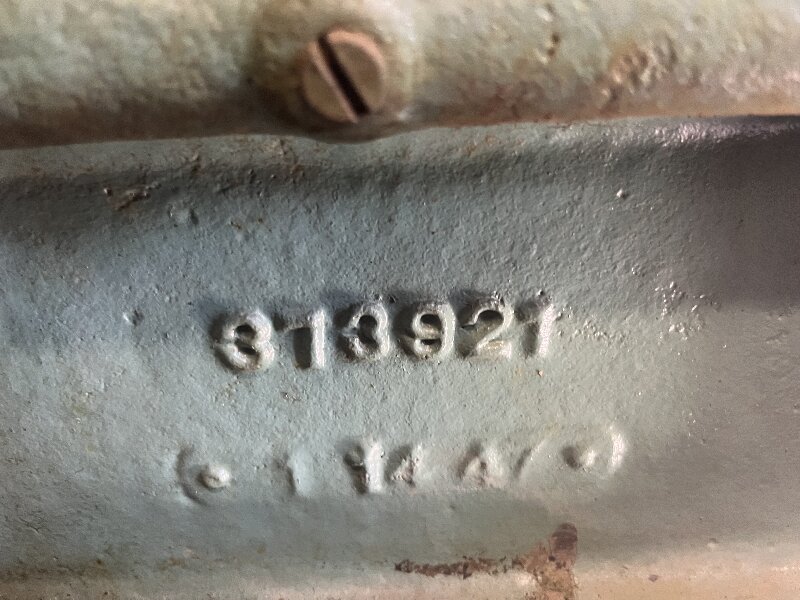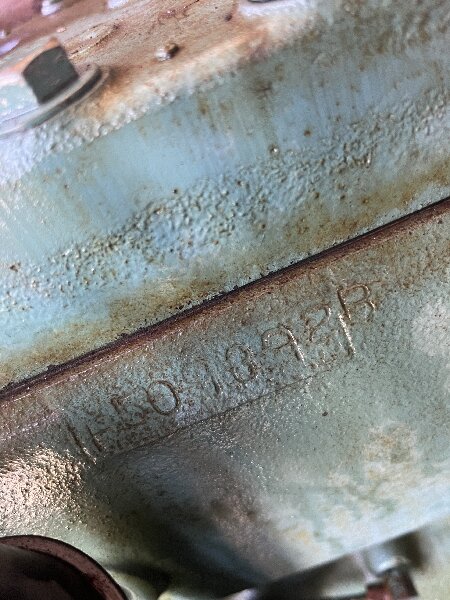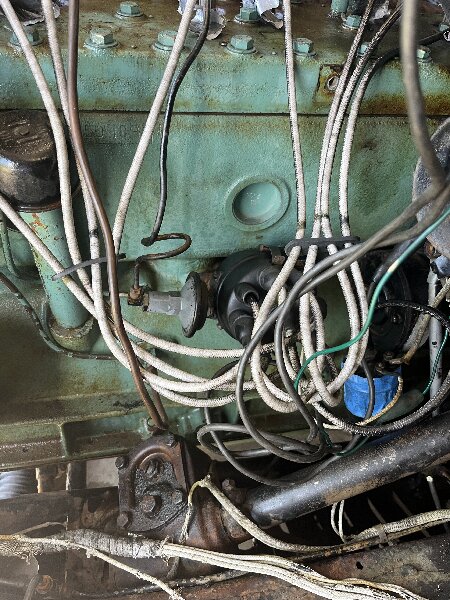|
Re: 1947 356 valve clearance
|
||||
|---|---|---|---|---|
|
Home away from home
|
The 356 has hydraulic lifters, so no adjustment required.
Posted on: 2024/4/23 12:10
|
|||
|
||||
|
Re: 1947 356 valve clearance
|
||||
|---|---|---|---|---|
|
Home away from home
|
I was told it was a 356 but maybe not. The engine serial number seems to have to many letters but the first 7 seem to be correct for a 47. 356 .also i was always told that the distributor is directly under the freeze plug on a 356. I went and checked again the lifter are adjustable but maybe when it was rebuilt someone put those in instead of hydraulic lifters
Attach file:  IMG_3364.jpeg (472.42 KB) IMG_3364.jpeg (472.42 KB)  IMG_3365.jpeg (992.45 KB) IMG_3365.jpeg (992.45 KB)  IMG_3362.jpeg (383.64 KB) IMG_3362.jpeg (383.64 KB)  IMG_3363.jpeg (520.36 KB) IMG_3363.jpeg (520.36 KB)
Posted on: 2024/4/23 13:57
|
|||
|
||||
|
Re: 1947 356 valve clearance
|
||||
|---|---|---|---|---|
|
Forum Ambassador
|
I don't find those particular numbers in Packard literature unless they were published as a later service change from the original specs and one followup change in a service counselor which I did find. Those specs were for mechanical lifters though.
As was mentioned, the 356 has hydraulic lifters so 0 clearance during operation. The only 356 spec I see is used during initial valve installation when substituting the plug tool in place of the hydraulic lifters. That spec is used when setting the maximum length of the stem if installing new valves or even after a seat regrind and remained unchanged on all years of the 356 at between .030 and .070. As I understand it that clearance is to ensure when the lifter is pumped up it is kept in the optimal working range and valve can still close. Original spec for mechanical lifters was .007 on intake and .010 on exhaust which was later reduced to .006 and .008 to cut down on noise. With expansion to contend with it would seem to me the Motors specs would be a bit tight..
Posted on: 2024/4/23 14:18
|
|||
|
Howard
|
||||
|
||||
|
Re: 1947 356 valve clearance
|
||||
|---|---|---|---|---|
|
Home away from home
|
Right. HH56 always speaks the truth.
Regarding the mechanical liftered engines, a wise auld mechanic's practice to prevent valve scorching was to use a go/no-go gauge, set intake at .007-.009, exhaust .010-.012 engine warm and running, or at least thoroughly warmed. Packard's focus on smoothness usually second-tiered performance, not that well-tuned Packards were slugs. Howard Reed, a Buick alum, tried to convince Packard mgmt. to adopt not just overhead valves, but overhead cam. He was told the additional noise would be unseemly. Read: Reduce Packard's profit margins. Some buffs forget that Packard's raison d' etre was not to produce toys for us 70, 80, 90 years hence, but return profit. Before the war, Packard was the second most widely held automotive stock after only GM. (Ford didn't go public 'til New Year's Day, 1956.) Packard's legal counsel, Henry E. Bodman, rewrote the Merlin contract so that it became the basis of government agreements for years to come. Packard's war work was not altruism, but for profit. Just as it was not the "Packard Merlin," but the Rolls-Royce Merlin for which Packard hired a phalanx of draftsman at taxpayer expense to redraw the plans suitable for Detroit production. Britain produced twice the Merlins as Packard, and each series either side of the Atlantic equally good. The PT boats were not as good as the German Diesel schnellboots, or fast boats, and used the more dangerous gasoline at sea simply as we never had a gas shortage and it simplified logistics. Gas rationing was to conserve vital rubber. Perspective aids discussion of nuts and bolts; why as well as how.
Posted on: 2024/4/23 18:20
|
|||
|
||||








